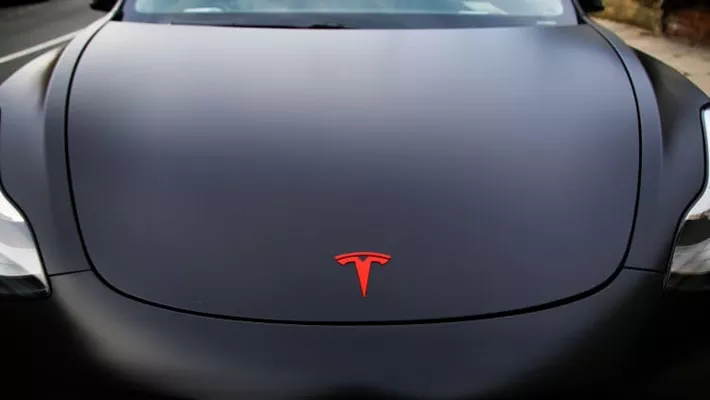Tesla Inc. (NASDAQ: TSLA) has become a household name, revolutionizing the electric vehicle (EV) industry with its innovative technology and ambitious vision. As of April 2025, Tesla’s stock price stands at $284.95, reflecting its significant impact on the market. However, despite its prominence, Tesla’s inclusion in major index funds has been a subject of debate and anticipation. This article delves into the factors influencing when and why index funds might decide to invest in Tesla, examining the company’s performance, ESG considerations, and the mechanics of index fund investments.
Understanding Index Funds
Index funds are investment funds designed to replicate the performance of a specific market index, such as the S&P 500. These funds offer investors a way to invest in a broad market segment without having to select individual stocks. The inclusion of a company in an index fund is typically based on its market capitalization, liquidity, and sector representation. However, some index providers also consider environmental, social, and governance (ESG) factors when determining a company’s eligibility for inclusion.
Market Capitalization and Liquidity
One of the primary criteria for a company’s inclusion in an index fund is its market capitalization. Tesla, with its substantial market cap, meets this criterion. Liquidity is another important factor, ensuring that the stock can be bought or sold in large quantities without significantly affecting its price. Tesla’s high trading volume indicates strong liquidity, making it an attractive candidate for index inclusion.
ESG Considerations
Environmental, social, and governance (ESG) factors have become increasingly important in investment decisions. Tesla’s commitment to sustainable energy aligns with environmental goals, but the company has faced criticism regarding labor practices and governance issues. For instance, Tesla was removed from the S&P 500 ESG Index due to concerns over workplace conditions and handling of incidents involving its driver-assistance systems. Although Tesla was later reinstated after improving its ESG disclosures, these factors continue to influence its inclusion in ESG-focused index funds.
Tesla’s Journey to Index Fund Inclusion
Tesla’s path to inclusion in major index funds has been complex. Initially, the company was not included in the S&P 500 due to concerns over profitability. However, after achieving consistent profitability, Tesla was added to the index in December 2020. This inclusion led to a significant increase in Tesla’s stock price, as index funds tracking the S&P 500 were required to purchase Tesla shares to mirror the index.
Despite this, Tesla’s inclusion in ESG-focused index funds has been more contentious. The company’s removal from the S&P 500 ESG Index in 2021 highlighted the challenges of balancing financial performance with ESG considerations. While Tesla’s return to the ESG index in 2023 demonstrated improvements in its ESG practices, the company’s ongoing efforts to enhance transparency and governance will play a crucial role in its future inclusion in ESG-focused index funds.
Factors Influencing Index Funds’ Decision to Invest in Tesla
Performance Metrics
Index funds aim to replicate the performance of their benchmark indices. Tesla’s strong financial performance, characterized by increasing revenues and profitability, makes it an appealing addition to indices like the S&P 500. However, the company’s stock price volatility poses a challenge for index funds seeking stability. The decision to include Tesla will depend on whether its performance aligns with the objectives of the specific index.
ESG Alignment
For ESG-focused index funds, Tesla’s environmental initiatives are a significant factor. The company’s efforts in promoting sustainable energy and reducing carbon emissions align with the environmental goals of these funds. However, social and governance factors remain areas of concern. Index providers will assess whether Tesla’s improvements in these areas are sufficient to meet the standards required for inclusion in ESG-focused indices.
Market Trends and Investor Demand
Market trends and investor demand also influence index funds’ decisions. The growing interest in sustainable and technology-driven companies has increased demand for Tesla’s stock. Index funds may consider this demand when deciding to include Tesla, as it can enhance the fund’s appeal to investors seeking exposure to innovative companies.
Conclusion
Tesla’s inclusion in index funds is contingent upon various factors, including its financial performance, ESG considerations, and market trends. While the company meets the criteria for inclusion in terms of market capitalization and liquidity, its ESG practices continue to be a point of contention. As Tesla continues to evolve and address these concerns, it is likely that index funds will reassess its eligibility for inclusion. Investors interested in Tesla’s potential inclusion in index funds should monitor developments in the company’s ESG practices and overall performance.
For those new to investing and interested in understanding how index funds operate, resources like the Investment Fund Market provide valuable insights into the fundamentals of fund investments.
Related topics:


